THIS CRAZY DAY IN 1972: A look inside Paul Powell's shoe box
December 27, 1971 - January 2, 1972
To access all site contents, click HERE.
Why do we run this separate item peeking into newspapers from 1972? Because 1972 was part of the ancient times when everybody read a paper. Everybody, everybody, everybody. Even kids. So Steve Bertolucci, the 10-year-old hero of the novel serialized at this Substack, read the paper too—sometimes just to have something to do. These are some of the stories he read. If you’d like, keep up with the 1972 papers every day on Twitter, @RoselandChi1972.
December 27, 1971
Chicago Daily News: No draft till April, Sec. Laird hints
By William McGaffin
16 antiwar veterans holed up in Statue of Liberty
AP
“Defense Sec. Melvin R. Laird announced Monday there will be no military draft call in January and ‘quite possibly’ none until April.”
Laird says they probably won’t need to draft anyone to go die in the pointless war in Vietnam until April because Congress ordered a 50,000 troop reduction. Also, “President Nixon is expected to make his next announcement of troop withdrawals in mid-January,” and the government just gave the military a $3 billion raise—so they think some people will volunteer, and others will re-enlist.
Meanwhile, 16 veterans barricaded themselves inside the Statue of Liberty Sunday night, calling for President Nixon to set a date for withdrawing all U.S. troops from Southeast Asia.
December 27, 1971
Daily News, Sydney J. Harris column: Youth errs in disdaining the past
Sydney J. Harris columns from 1971 are bizarrely topical.
“Young people are right in demanding that their studies be ‘relevant,’” writes the Daily News’ regular philosophical op-ed columnist. “What they don’t understand, however, is ‘revelant to what.’ Nothing can be relevant to itself; the word needs a proper object.”
“My 16-year-old son informs me that many of his classmates have no interest in studying about Nazism and the causes and consequences of World War II. To them, the 1930s might as well be the 1630s. The past has no perspective for them; only the present has meaning.”
Young people mean well, Harris writes, “But good intentions built on ignorance is the surest way to turn idealism into cynicism; as the Romans knew, and said, the worst is a corruption of the best.”
“Many militant youngsters, for instance, have a habit of calling anyone who disagrees with them a ‘fascist’: just as their opposite numbers are so fond of calling their opponents ‘communists.’ But a fascist is not the same as a conservative, or even a reactionary: just as a Communist is not the same as a liberal, or even a radical.”
“Relevance partakes of the past as much as it projects into the future: ‘What’s past is prolog,’ said Shakespeare, is the truest line he ever wrote.”
December 27, 1971
Chicago Daily News: Nab Downers Grove man in ‘hijack try’
No byline
American Airlines officials claim their hijacker yesterday was just an "unruly passenger," which I suppose is technically true.
Passengers and crew were clear that Donald Lewis Coleman of Downers Grove was a hijacker, even if his attempt was inept and ultimately unsuccessful.
Coleman was irritating for most of the flight—”He refused his dinner and he feigned a lot of pain. He kept taking his sunglasses off and putting them back on,” according to one passenger.
Then, “Coleman pulled a plastic pistol from a shoulder holster and approached a stewardess.”
The pilot decided to land the plane after Coleman “allegedly held several stewardesses” while waving a small knife and what turned out to be a toy pistol. As the plane landed, Coleman opened a hatch to escape. The pilot saw a warning light indicating the door was open, and slammed on the brakes, “throwing Coleman to the floor.” (I agree that the entire process of landing a plane seems like ‘slamming on the brakes,’ but this is how the story describes the pilot’s move.)
Then two passengers and two crew overpowered the hijacker.
In other hijacking news, over the weekend an Indianapolis man tried to recreate D.B. Cooper’s daring November hijacking, demanding $300,000 and two parachutes, but the FBI nabbed him shortly after delivering the ransom. His bail has been set at $100,000. See last week’s THIS CRAZY DAY compilation on December 24-25 for more, including the hijacker’s declaration to passengers, “You’re all gonna die with me.”
Meanwhile, a hijacker with a gun and a hand grenade diverted an Air Canada flight to Cuba. The Air Canada hijacker “handed a stewardess a note about five minutes before the plane was to land in Toronto. The note said: “Think. We have fragmentation grenades and a .38. caliber revolver. Take me to the captain. We are going to Havana. This is no joke.”
“The refueled plane flew to Havana, landing just before midnight. The hijacker got off. The plane refueled and landed at Toronto after a three-hour flight,” with many passengers not knowing anything had happened.
December 28, 1971
Chicago Daily Defender: Mother lauds son slain in ‘L’ attack
By Faith C. Christmas
“I didn’t want Larry to go to that party, but since it was Christmas he wanted to go so badly, I consented. Now, he’s dead.”
That’s Faith C. Christmas’s powerful lede to this sad but familiar story that could have happened this week in 2021.
“Mrs. Dorothy Chenier, the mother of a 16-year-old youth who was stabbed to death early Sunday morning on an El platform at 79th and the Dan Ryan Expressway paused as she recalled the last moments spent with her youngest child.”
Mrs. Chenier had recently moved to Harvey to keep Larry away from trouble. She said he was an average student at Calumet High School, and won several Little League trophies. After the family’s Christmas dinner, Mrs. Chenier let Larry go to a friend’s party, driven by another friends’ parents. “I didn’t know they weren’t going to bring the boys back home,” she said.
Lawrence Chenier, 16, and his friend Samuel Blissett, 20, left the party and waited at the Dan Ryan’s 79th Street L stop. “Witnesses reported that (a) man, accompanied by a woman companion accosted” Lawrence “and the man plunged a knife twice into the teenager’s chest, before escaping on a southbound train.”
Mrs. Chenier is a lay-out artist with the Defender. “I just feel terrible, not only because it was my son who was killed, but because so many young kids are being murdered and it keeps getting worse,” she said. “I don’t know what the solution is but I know there’s something drastically wrong with a system that fails to protect its citizens or properly punish those who inflict death and pain on others.”
“Perhaps it was just his time to go but how anybody could snuff out the life of a young kid who didn’t even have a chance to taste life is despicable. I want my son’s killer caught because somebody else’s child could be next.”
“’Larry was a good boy and never gave me any trouble,’ she said softly.”
December 28, 1971
Chicago Daily News: Vets bow to court, quit Statue of Liberty
AP
Sixteen veterans barricaded themselves inside the Statue of Liberty on Sunday demanding a date for complete U.S. troop withdrawal from Southeast Asia. On Tuesday, the veterans agreed to leave after a federal judge ordered them out.
“After the veterans left the statue, they read a mock court order against President Nixon and the government…Daev Shafram, of Boston, read a ‘permanent restraining order’ in the name of the people of the world, calling for an immediate halt to ‘an illegal and immoral war in Southeast Asia.’”
Fellow protester Bob Clarke, 22, of Pittsburgh, said the protest was a success. “Nobody has ever done it before. I’m sure we reached the troops in Vietnam with this.”
December 28, 1971
Chicago Tribune: Sound off, Sports Fans
By Frank H. Keith
Dundee – Advice to George Halas:
1. Trade an unhappy Dick Gordon for an unhappy Daryle Lamonica.
2. Make Gale Sayers a wide receiver (like they did Charlie Taylor).
3. Make Bobby Douglass into a running back partner of Joe Moore (Lombardi switched Hornung from quarterback…remember?).
4. Use the top draft choices to get a blocking tight end and offensive linemen, especially a center.
–ROBERT WHITEHOUSE
CHICAGO – It was nice of the Bears not making the playoffs so that the TV fans here would not be blacked out.
-- BOB SHARKEY
FYR (For Younger Readers): At this time, per NFL rules, home games were blacked out in their local markets. You had to drive far away to a different viewing area—such as Indiana or Wisconsin—to watch the local game on TV. Or, you could find a local bar that featured what they called “closed circuit TV” for just this purpose.
Steve’s dad would often go to a bar with “closed circuit TV” to watch Bears home games. Steve even remembers going with his dad to St. Peter and Paul’s school in 1969, not a bar just to be clear, to watch a game on closed circuit TV in a classroom. They watched the Bears play the Steelers for their only win that year.
December 29, 1971
Chicago Daily Defender: Cherokee Charlie Says
“The ears of Alderman Claude Holman must have caught on fire Sunday night,” writes Charlie.
“NBC-TV commentator Walter Jacobson did one of his analytical, brief documentaries that was calculated to make one wonder how Holman keeps getting elected. The film shots of the Holman bailiwick, the 4th ward, showed gutted buildings, rubble-strewn sidewalks and play areas, enough litter and debris to fill up the Grand Canyon.”
FOR (For Older Readers): You forgot Walter was out there doing field segments before his 1995 homeless series? And yes, Walter was with Ch. 5 for a couple of years.
I miss Walter Jacobson, and I mean that with utter sincerity, to be clear. Don't you? Of course he never threw a book at me.
FYR (For Younger Readers): Yes, the Defender ran a column called "Cherokee Charlie says." It's 1972, Jake. See the January 4 item here for more background.
December 29, 1971
Chicago Daily News: Judge looks at curbs on voter files
By William F. Mooney
Remember Mike Royko’s front page scoop last week? Mike revealed that Machine flunkies spent a day forging voter signatures on petitions to get Mayor Daley’s new candidate for state’s attorney on the ballot, after he dumped indicted incumbent Ed Hanrahan from the Democratic slate.
Wednesday, U.S. District Court Judge Bernard Decker started hearings on a lawsuit by the IVI and others investigating the allegedly forged petitions, against among others the Chicago Board of Elections, its chairman Stanley Kusper, and Mayor Daley.
Kusper won’t let anyone compare voter registration files with the petitions to check for forgeries. He claims it’s against state law.
The IVI is set to challenge the petitions for Mayor Daley’s candidate, Raymond Berg, in front of the County Electoral Board on Friday. The lawsuit asks Judge Decker to extend that deadline until the IVI can compare the petitions and voter signatures.
“This is like stuffing the ballot box, but just doing it earlier,” said IVI attorney Marshall Patner. That great line perhaps tips you off that Marshall Patner was a giant of Chicago’s legal-political anti-Machine community.
Marshall Patner’s papers are rather ironically kept at UIC’s Richard J. Daley Library. See the website here for a short biographical note too. Patner represented Dick Gregory in Dick Gregory v. City of Chicago, arguing the free speech case successfully before the U.S. Supreme Court.
December 29, 1971
Chicago Daily News: Dooley fired by the Bears
By Ray Sons
This rates a gigantic front page headline above the masthead with an exclamation point—even though no one can be shocked.
Papa Bear George Halas says “the record speaks for itself.”
Out of four seasons, Jim Dooley’s best was his first one, 1968, with a 7-7 record. He’ll be paid for the remaining year in his contract.
Papa Bear says he hopes to name Dooley’s replacement “at least two weeks” before the NFL draft in early February, so that’s soon. But who? “’The door is wide open,’ said Papa Bear, ‘as to whether the man will come from our staff or whether he will have professional experience elsewhere or whether he will come from the college ranks.”
Ray Sons points out that if Papa Bear hires someone “outside the organization, it will be the first time in their history they’ve done so.” Papa Bear has coached the team he founded in 1920 mostly himself. Dooley worked his way up through the Bears staff to succeed Halas.
“’You know,’ said Bears’ president Muggs Halas, ‘we haven’t had too much experience in this business (of finding a head coach).’”
December 29, 1971
Chicago Daily News: Ald Simon demands stump removal action
By Jay McMullen
Ald. Seymour Simon (40th) is an independent Democrat (at this point—very complicated bio, see below) and thus has a hard time getting city services in his ward. “Angry words flew at a City Council Finance Committee meeting” writes reporter Jay McMullen, future husband of future Mayor Jane Byrne.

Chicago elm trees were recently decimated by Dutch Elm disease, and the city’s forestry bureau chief promised to remove all of Simon’s ward’s elm tree stumps by the end of 1970, but hasn’t.
“What kind of a city have you got when you can’t even remove tree stumps?”said Simon. “It’s a sick city.”
Ald. John Hoellen (47th) “complained that the city’s program to replant trees to replace those cut was ‘microscopic.’ Hoellen called it a disgrace: ‘The Ravenswood area stands starkly naked today. In my ward I think 200 trees were planted to replace 2,000 removed because of Dutch Elm disease.’”
Which is when Ald. Tom Keane (31st), Finance Committee head and second in power only to Mayor Daley even though younger readers have probably never heard of him, started yelling at Hoellen.
“Keane stood up and shot back, ‘Why don’t you tell the people of your ward that you vote ‘No’ on all the budgets and that if you had your way, they would get no service at all.’”
“I vote ‘Yes’ and the services still aren’t performed,” Simon answered.
Seymour Simon would go on after the Council to be a state Appellate judge and then a state Supreme Court justice. In 1971, as we join him in action, Simon had already served a stint in the Council before being appointed to a vacancy on the Cook County Board. From there, he stepped up to Board President—all thanks to Mayor Daley.
But Mayor Daley made sure President Simon wasn’t slated by the Democrats to run for re-election because Simon ran afoul of Ald. Keane—as mentioned above, the second most powerful politician in Chicago after Mayor Daley.
Per the Tribune’s obituary of Seymour Simon, he had refused “to order the rezoning of 186 acres in Northfield Township for use as a garbage dump at [Keane’s] request.”
Off the county board, Simon has returned to City Council in what looks very much like a kind of political purgatory. He can’t even get dead trees removed.
What about Ald. Hoellen"? He was the Council's lone Republican, so 'nuff said there.
December 29, 1971
Daily News: Jesse Jackson: Is he for real?
By L.F. Palmer, Jr. and Betty Washington
Since Jesse Jackson left the SCLC’s Operation Breadbasket to found PUSH, there’s “a question that is being raised with increasing frequency: Is Jesse for real?”
BTW, Lu Palmer and Betty Washington are two of the few black reporters at the Daily News at this time. Both started at the Defender. Washington shifted to the Sun-Times after the News folded in ’78, and left Chicago in 1984 for other cities and papers, ending with the Milwaukee Journal.
Palmer was already a weekly Daily News op-ed columnist in ’71, and already also an activist. He will leave the Daily News and become a legendary full-time activist for Chicago’s black community, and a prime mover behind the election of Chicago’s first black mayor, Harold Washington.
“In the language of the streets, that means: Is Mr. Jackson totally dedicated to the cause of black liberation or is his personal ambition a higher goal?” Palmer and Washington write. “What makes it crucial is that Jesse L. Jackson has blazed a trail that has led him out of obscurity to the top of the heap among black leaders.”
“He has been called ‘the most persuasive black leader on the national scene’ by the New York Times. Playboy magazine has referred to him as ‘the fiery heir-apparent to the Rev. Dr. Martin Luther King Jr.’”
Jackson came here first in the mid ‘60s to study at the University of Chicago’s Chicago Theological Seminary, after turning “down a contract to play with the Chicago White Sox”. “It was Dr. King who started Mr. Jackson up the ladder to national acclaim and, ironically, to his break with the Southern Christian Leadership Conference, which Dr. King founded and led until his death.”
Dr. King appointed Jackson head of Operation Breadbasket’s Chicago branch, and then national director. “His magnetism drew thousands to regular Saturday morning Breadbasket meetings” until the SCLC “began purchasing an old theater on Chicago’s South Side (the Capitol) and changed the name to Dr. King’s Workshop.”
Using boycotts, Jackson “muscled out agreements with 13 major companies resulting in the hiring of some 3,000 blacks. The agreements also called for placing black-produced products on chain store shelves and the employment of black-owned service companies such as scavengers, banks and builders.”
“Mr. Jackson’s critics among blacks” say his style is more “’hit and run’ than ‘stay and fight to the finish.’” He’s also moved from economics to more politics, including “an abortive attempt to run for mayor this year”.
“It is widely believed that Mr. Jackson diluted whatever threat he may have posed to Mayor Richard J. Daley when he was photographed at Black Expo engaging Daley in a black power handshake.” Black Expo led to Jackson’s break with SCLC, which suspended Jackson after finding two nonprofit corporations were formed to run Black Expo without SCLC knowledge.
But Jackson’s break with SCLC was also the culmination “of a long feud between Mr. Jackson and the Rev. Ralph Abernathy, who succeeded Dr. King as president of SCLC. It is known that Mr. Jackson’s ambitions exceeded the role he was playing in SCLC.”
“Behind him are many luminaries in the black world and more ordinary people than any single black leader in the nation can call his followers….It was a frenzied crowd that filled the Metropolitan Theater and spilled out onto the sidewalks” for the recent first PUSH meeting.
“Mr. Jackson’s performance will come under close scrutiny in the months to come…The real Jesse Jackson will stand up in the days ahead.”
December 30, 1971
Chicago Daily News: Dems bow in petition fight
By William F. Mooney
“This is like stuffing the ballot box, but just doing it earlier,” IVI attorney Marshall Patner said in court for a lawsuit yesterday against Mayor Daley, among others.
The IVI was in court Wed and Thurs asking U.S. District Judge Bernard Decker to make the Elections Board show them voter registration records to compare with the allegedly forged voter petitions for Judge Raymond Berg, Mayor Daley’s candidate for Cook County State’s Attorney—and to extend the deadline for ballot challenges.
Recall Mike Royko broke the story on December 21 that Machine flunkies spent a day forging Berg’s petitions to get him on the ballot on time. Chicago Board of Elections chairman Stanley Kusper claimed state law didn’t allow showing anybody the voter registration records to check for forgeries.
On Thursday, Daley’s Machine “capitulated” and “caved in” after “Judge Decker threatened to issue a court order that could have formally established a right to inspect files in any future investigations of alleged petition violations.”
Decker’s threat, when the Machine lawyers “appeared to drag their feet” on deciding whether they’d allow inspection and an extension: “I may assist them in making a decision.”
“This is the first time that the Democratic machine has left such massive evidence of dishonesty in writing,” said IVI chairman Michael Shakman, the guy who put the Shakman in “Shakman decree”.
The Daily News hired a handwriting expert to look at 100 petitions for signs of forgery. He says he found the “most flagrant irregularity I’ve ever seen.”
December 30, 1971
Daily News: Shakeup hits top cops
Remember Mayor Daley’s no good very bad day in November when the Daily News reported a “federal strike force” supervised by U.S. Atty Gen. John Mitchel was investigating Chicago police with a grand jury?
Since then, the grand jury has heard evidence on “charges that police—most of them from the West Side—have shaken down tavern owners in a ‘protection’ racket, helped manipulate call girl activities, sold narcotics confiscated in police raids and received stolen merchandise.” Whooh, they’ve been busy!
Now, Police Supt. James Conlisk has “ousted the deputy superintendent responsible for ferreting out improper police activity”—that’s Captain John Kelly, who will no longer be deputy supt. for the Bureau of Inspectional Services. “No new assignment for Kelly was announced.”
Conlisk would only say that the moves “’strengthened the command’ and guaranteed ‘the continuing viability of the department.’” Mayor Daley says “if it strengthens the service, then that’s fine by me.”
December 30, 1971
Daily News: Players sorry to see Dooley go
“I’m sorry to see him go. He’s a man very dedicated to his job, and he knows a lot of football. He was a victim of circumstances. He had a lot of injured players,” said Gale Sayers, rightly putting himself #1 on that list.
Jack Concannon, the starting quarterback who was “lost for the season with a knee injury in the third game,” said a coach needs to be GM too to be successful.
Doug Buffone pointed out that earlier in the year, when the team was doing well, Dooley “came close to being ‘Coach of the Year’….That’s a helluva drop.”
December 30, 1971
Daily News, Ray Sons column
Sports editor Ray Sons writes a generous, insightful column on the firing of Bears coach Jim Dooley:
“The losing he did here will help him to be a winner somewhere else,” he begins. “He wasn’t ready to be a head coach when he got this job, and maybe he isn’t ready to be one now. But he’ll be a good one, some day.”
“Many Bears and most of us who wrote his history thought we saw the marionette strings on Dooley that he was too loyal to say were there. Most of my colleagues will rap George Halas for pulling those strings, and tripping Dooley in them. I won’t do that, because I think it would be unnatural for Halas to keep hands off the operation of the organization that has been his life and fortune. Would you, in his place?”
But, says Sons, Halas could have helped with two obstacles in Dooley’s way—“Too many important Bears were unhappy with their pay” and, over all, “Dooley labored with players who were not good enough to win championships.”
December 30, 1971
Daily News: Wanted: Bear coach with Patton punch!
By Ray Sons
At the press conference when Papa Bear George Halas announced he’d fired coach Jim Dooley, somebody asked if Halas considered taking the job back himself. The answer was yes, briefly—right after he finished watching George C. Scott in “Patton.”
Remember how everybody was obsessed with “Gladiator” after that movie came out? George C. Scott in “Patton” was like that.
“I never got such a bang out of anything,” Halas told reporters. “I thought, ‘Here is the man ideal for me. He has discipline, organization, leadership.”
And Halas figured he fit the bill. But he dropped the idea after a while.
December 30, 1971
Chicago Daily Defender: Library regional Center named for black historian
“The first of the Chicago Public Library’s projected regional centers will be named for Carter G. Woodson, ‘The Father of Negro History.’”
The Woodson center will rise at 95th and Halsted and house the Vivian G. Harsh Collection of Afro-American History, currently at George Cleveland Hall Branch Library at 4801 S. Michigan.
“Carter G. Woodson was born in 1875 at New Canton, Virginia, the son of former slaves. He had a doctor’s degree in history from Harvard and was head of the history department at Howard University…Among his 16 books the best known is ‘The Negro in Our History.’”
Woodson founded the Association for the Study of Negro Life and History, with its Negro History Bulletin, in 1915. He also founded the Journal of Negro History, and began Negro History Week in 1926—which became today’s Black History Month.
December 31, 1971
Our Buddy, old-time reporter
By Donald Zachert
After 47 year, 5 months, and 24 days, Daily News police reporter Buddy Lewis retired and got a nice profile in the paper. He started in 1924 when the Daily News offices were at 15 N. Wells, and “a towering giant clad in longjohns, beard and leather apron rolled newsprint off a horse-drawn wagon.”
As a 17-year-old assistant to editor Henry Justin Smith, Buddy’s early tasks included delivering brown paper packages of Prohibition alcohol around town for Smith’s personal secretary, who apparently had a little business on the side.
Soon Buddy “became a picture chaser, an obsolete classification that required one to snatch photographs of dead, dying or runaway people from their bereaved families.”
Then, Buddy was bundled off to the police beat, and stayed there, with many a midnight trip to cover dead mobsters in car trunks. “Back in the police bureau press room, the reporters were provided with their own slot machine. Over the years, payday crap games had worn a hole through a hollow tile wall.”
Zachert finishes with a tender remembrance, and fascinating look at how a police beat reporter used to work: “Through it all, Buddy Lewis’ hallmark was patience. It took patience to show a green kid how to get a story, who to ask, what to ask, how to ask it, what a fact is and what a fact isn’t. It took patience to start and keep up an elaborate file on crime and criminals, cross indexed, with which to out-criminology the criminologists….You’ve got a goodnight, Bud.”
December 31, 1971
Daily News, Letter to the Editor: It should be obvious ‘we need each other’
“I took this photograph near the intersection of Ashland and Polk just before Christmas,” writes Mark Goren, a student at Rush Medical College. “The poor man needed much more than I could give him, though I did help him get home and off the street.” Unfortunately, the photograph was completely obscured on my microfilm digital copy.
“What is most disturbing is that, though we undeniably need each other, very few people care. Unfortunately our whole society is organized so that dollars are more important than people, and all the individuals without the dollars, like this man, are condemned to a life of hunger, illness and poverty. Somehow this must change. Unless it does, all the nice words we say at Christmastime are hollow lies.”
December 31, 1971
Daily News: Report jury set to indict 20 city cops
That federal grand jury investigating Chicago police is about to bear fruit, reports the News. First, Police Supt. James Conlisk shuffled top cops yesterday to make it look like they’re doing something about it.
The main shuffle was demotion of the Deputy Supt. of internal investigations John Kelly, who “ironically…originally got his job as chief of the Bureau of Inspectional Services as the result of a shakeup that preceded another federal grand jury action 18 months ago.”
This morning, Conlisk followed that up by suspending nine cops who refused to testify for the grand jury. And today the News has juicier details on what some Chicago cops have allegedly been up to:
“Payoffs to police by South Side gamblers, who operated an extensive wagering ring out of a liquor store at 5738 S. Prairie….Corruption among vice and gambling squad detectives and their superiors in several West and North Side districts, including $100-a-month shakedowns of tavern owners, joint control of prostitution with syndicate mobsters and acceptance of ‘protection’ payoffs from dope peddlers.”
January 1-2, 1972
Chicago Daily News: Shoe-box scandal, a year later
by John Camper “Of Our Springfield Bureau”
It’s a new year, but Chicago (and Illinois) can’t get enough of last year’s best scandal: Illinois Secretary of State Paul Powell dropped dead unexpectedly and about $750,000 in small bills was found stashed in his Springfield hotel room closet, some of it in an old shoe box.
Today, the shoe box would be a meme that breaks the internet. In 1972, it’s just included in a fun cartoon to illustrate the story:
Powell’s estate turned out to be worth $3 million plus a shady 61,290 shares of stock in seven Illinois racetracks, though he never made more than $30,000/year. He died October 11, 1970. His executor found the shoe box et al on October 13, but didn’t report it until late December. The news broke on December 30, 1970—making it a 1971 story as the details unfolded. The shady race track stock spent all of 1971 ensnaring other politicians, including recently indicted former Illinois Governor Otto Kerner.
Powell died in Rochester, Minnesota, in the hotel where he was staying as he visited the Mayo Clinic. He died with his $18,000/year “executive secretary” Margaret Hensey. Early the next morning, Camper relates in today’s story, Hensey and top Powell aide Nicholas Ciaccio were in Powell’s Springfield office toting out money and records with a few others, including Powell’s chauffeur. Later that day Ciaccio, his wife and Hensey flew to Rochester and pretended the Ciaccio’s had been there all along. And Powell’s death was finally reported.
So as 1971 closes and 1972 begins, naturally the Daily News takes a look at how the various characters in the Paul Powell story are doing. Paul Powell is still dead. Among the others, Camper tells us:
“Mrs. Margaret Hensey.….Mrs. Hensey was named in Powell’s will to receive his Chicago Downs Assn. racetrack stock worth approximately $700,000, but will not receive any money until all the legal battles are decided.…The state is suing her for $2,000 for removing Powell’s assets without notifying the attorney general or state treasurer….Mrs. Hensey quit her state job the month after Powell died and is still unemployed today, although there have been rumors that she is seeking to get back on the state payroll to qualify for her pension.
“She still lives in a modest two-flat on the south side of Springfield, reportedly travels extensively and still refuses to talk to reporters, although she refuses more politely than she did when the Powell furor was at its peak. She recently was seen dining with friends at the St. Nicholas Hotel (where Powell lived), presiding queen-like in a red pantsuit.”
Yes, younger readers, it used to be completely normal to imply all kinds of things about a woman in a news story by describing her outfit. And a red pantsuit in 1972 was even worse than Hillary Clinton’s pantsuits in the early 21st century. I’m surprised it wasn’t described as a “scarlet pantsuit.”
“Nicholas D. Ciaccio….The new Secretary of State, John W. Lewis, fired him Jan. 8. Ciaccio is being sued by the state for $1,000 on charges similar to those against Mrs. Hensey.”
“Emil Saccaro. He was Powell’s chauffeur and another member of the group that cleaned out the office. Saccaro is no longer employed by the state but continues to operate the Paddock Tavern across the street from the St. Nicholas.”
“Seymour Emalfarb. A former business partner of Powell, Emalfarb was the first person to be indicted in the Powell case. He was convicted last month of extorting $2,000 from an Indiana trucker by threatening to have his trucks repeatedly ticketed by a group of state troopers called ‘The Wolf Pack’ if the trucker did not make political contributions to Powell.”
Camper winds it up: “It’s anybody’s guess who might be indicted next, and not all politicians are sleeping soundly.
“‘Whoever gets indicted has Powell to thank for it,’ said an aide to a top Democratic officeholder. ‘And to think that Powell had the nerve to have his tombstone say, ‘Here lies a lifelong Democrat.’”
If you haven’t read Mike Royko’s Powell-related columns and you’d like to catch up, check out:
November 9, 1971: “A hero who changed”—One of Mike’s finest columns, which I compare favorably to “Paradise Lost.” This concerns Powell associate Illinois Rep. Clyde Choate.
November 16, 1971: “Punch me in the nose?!” and November 18, “If the yahoo fits, wear it!”—hilarious columns on the repercussions of the November 9 Clyde Choate column
December 16, 1971: “Say it isn’t so, Otto”—Mike’s take on former Gov. Otto Kerner’s indictment in the Powell racetrack scandal. As always, Mike puts it all in perspective.
January 2, 1972
Chicago Tribune: Good Shepherd Brightens Sniper Victim’s Life
by Terri Schultz
Joshua Taylor, shot by a sniper as he walked back to school after lunch from his home in Cabrini-Green, made the news for his tragedy on December 8.
That night, Frank Ullrich of Brookfield was also on the news, for his visits to school children dressed as a biblical shepherd telling the story of Christmas. Frank Ullrich watched himself on the news that night, saw Joshua, and decided to meet him as soon as visitors were allowed.
The scene in Joshua’s hospital room is very different here than in the upbeat Daily News story last week when Gale Sayers visited Joshua and gave him an autographed football. Ullrich has already visited once as himself, and returns this night in his shepherd costume.
“Joshua lay under a white chenille bedspread, his paralyzed legs strapped up for safety and comfort,” writes Schultz. “His breathing erupted occasionally into soft, cadenced whimpers. His dark lashes dropped down his chocolate cheeks.”
“His mother was there, quiet, nervous, resigned. Her son was used for target practice, she whispers. In her neighborhood, it doesn’t matter who or what they shoot at. It would be nice, some day, to own a small home and feel safe, she whispers. She has six other children at home. Her husband, Joshua Taylor Sr., drives a cab. And now there are medical bills.”
….”Suddenly a blur of striped cotton robe, white hood secured with purple cord, sandals, and pure deep set eyes appears at the foot of Joshua’s bed. The shepherd of Bethlehem invites those in the room to Jerusalem, lets us listen in to the angel Gabriel.. Joshua’s breathing quiets, his eyes widen….Somewhere in his story, the shepherd tells us not to be afraid. Somewhere, Joshua reaches out his hand and the shepherd clasps it and brings the frail wrist to his face.”
…. “Joshua watches him retreat from the room…Joshua clasps in his hands a book of Bible stories the shepherd left behind, smiles, and is quickly asleep.”
January 1-2, 1972
Chicago Daily News: ‘Hope, Crosby and Lamour on Road to Hanoi’
Letter to the Editor
Daily News reader George Bernstein, from Park Forest, was unimpressed with comedian Bob Hope’s attempt last week to negotiate the release of American prisoners of war from the North Vietnamese—covered on December 23 in THIS CRAZY DAY IN 1972.
Without checking with close personal friend President Nixon, Bob Hope went to the capital of Laos and met with an official of the North Vietnamese embassy there. He wanted a visa to Hanoi, where he hoped to trade $10 million for captured U.S. soldiers. U.S. officials said our government opposes paying ransoms in principal, since “this might produce many difficulties…if and when diplomats are kidnapped by terrorists.”
Bob Hope has not, as of this date, freed any POWs.
Bernstein’s letter is windy and not as funny as he thinks it is, but I’m so struck that the Daily News ran the whole thing, I’ll reprint the full text too:
“Bob Hope’s attempt to negotiate the release of the POWs is bizarre enough to be considered inspired. What could be more appropriate than to have this delicate matter be handled by a clown who is an unreconstructed hawk? But the operation is being jeopardized by Hope’s conceited desire to play it as a single. What is needed here is a team effort, and I believe the situation can be saved by some careful rewriting of the script. Here are suggestions just for starters:
“Father Crosby is doing time in a federal pen for pouring chicken fat on draft records. On Christmas Eve (Darn, it’s too late for Christmas Eve!), OK, on New Year’s Eve he stops a prison break by singing ‘Ave Maria’ and ‘Adeste Fidelia’ (in Latin). In gratitude, President Nixon pardons him. He goes to Canada where he finds Dorothy Lamour is the house mother in a hostel for draft dodgers. He sings all four verses of ‘The Star Spangled Banner’ (in English).
“The exiles are so moved that they all volunteer to return to the United States and serve their country by doing five years in the pen. Their offer so impresses President Nixon that, on Lincoln’s Birthday, he issues a new and greater Emancipation Proclamation, granting amnesty to all draft dodgers, deserters and violators of the law.
“Bob, Bing and Dottie set out on ‘The Road to Hanoi,’ flying over on a superjet. In the lounge they gather ‘round the piano to sing the old (and a few new) favorites. In Hanoi there are merry hijinks and elaborate charades as they try to communicate with the North Vietnamese, who can’t understand simple English. The secret police mistake them for CIA agents, and there are wild chases through the rice paddies and government buildings. Finally, the three are seized and taken before the Commie bosses.
“The trio soon create a favorable impression by their typical honest, straightforward American ways. They even offer themselves as hostages for the POWs. The Commies not only release the POWs but agree to end the war.
President Nixon now explodes a diplomatic bombshell. He names the day on which the GIs will be withdrawn from Vietnam. By the merest coincidence this happens to be election day, 1972. The Generation of Peace now officially begins with a grand and colorful extravaganza at the UN and lesser extravaganzas in Washington, Hanoi, Saigon, etc., etc.
As I said, this is only for starters. I’m sure the Pentagon and the State Department can do much better.
GEORGE J. BERNSTEIN
Park Forest
Do you dig spending some time in 1972? If you came to THIS CRAZY DAY IN 1972 from social media, you may not know it’s part of the book being serialized here, one chapter per month: “Roseland, Chicago: 1972.” It’s the story of Steve Bertolucci, 10-year-old Roselander in 1972, and what becomes of him. Check it out here.

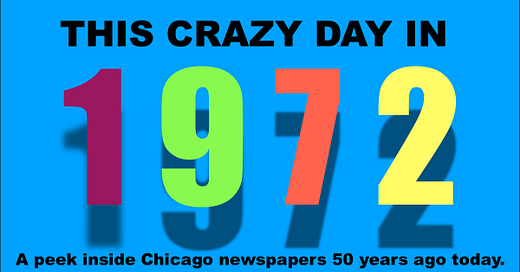





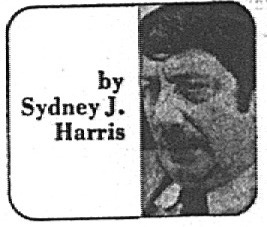








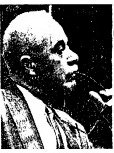
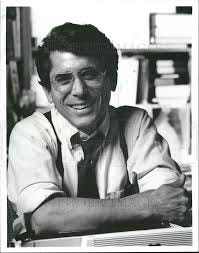





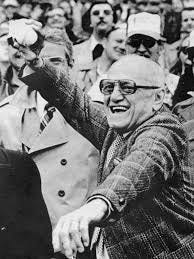
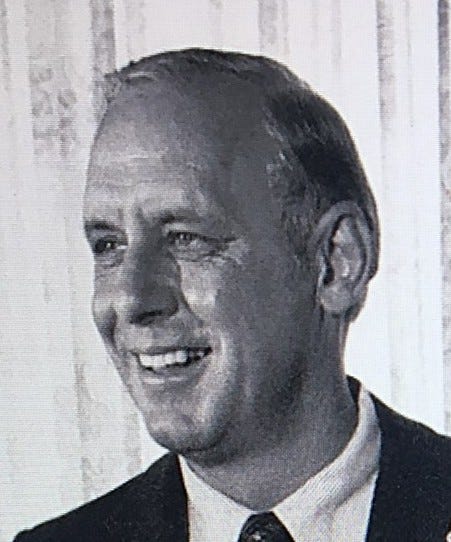

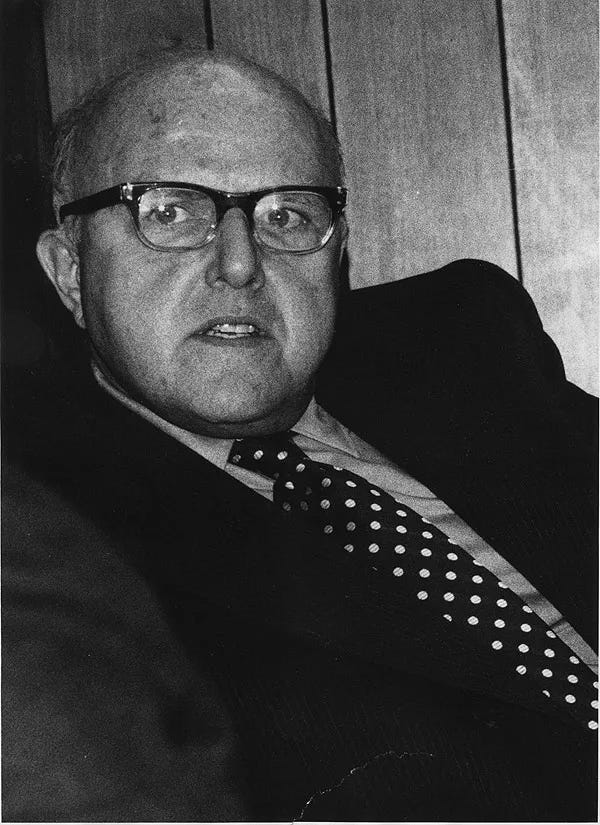








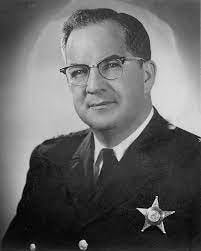

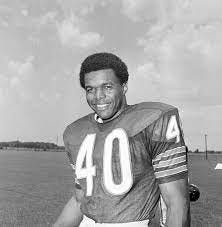
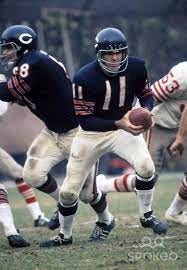



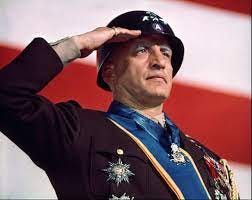

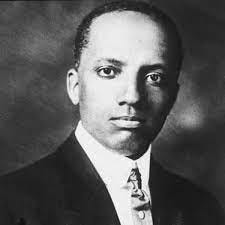


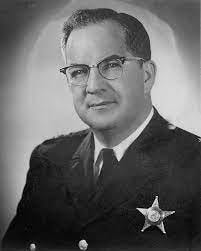


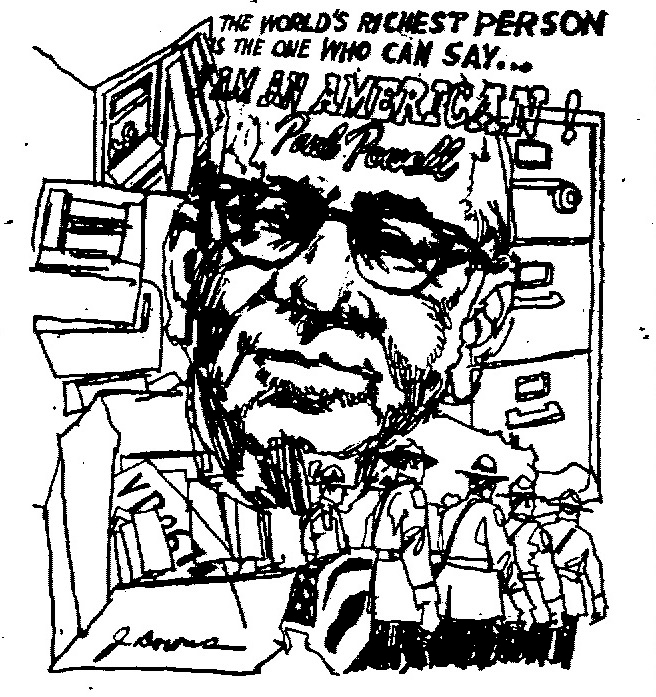
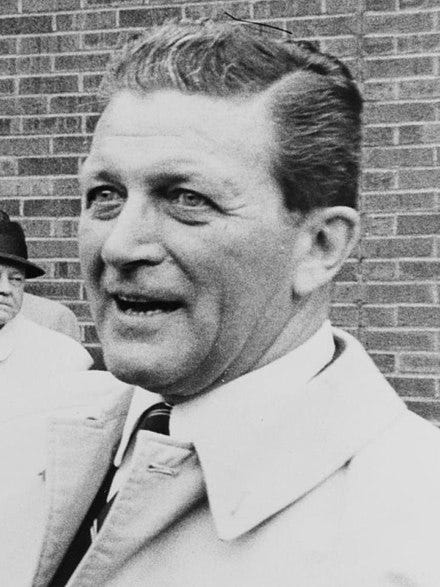







You might find this article interesting, it is not behind a paywall. https://www.nytimes.com/1971/01/15/archives/mystery-in-illinois-millionaire-aide-mystery-in-illinois-how-30000.html